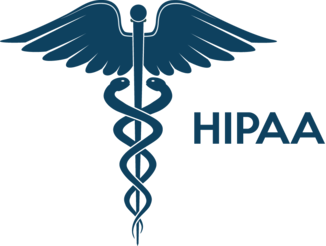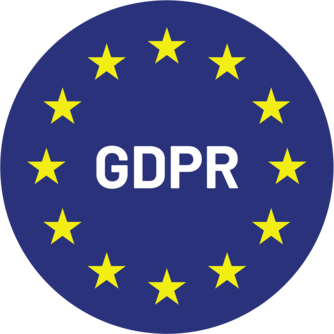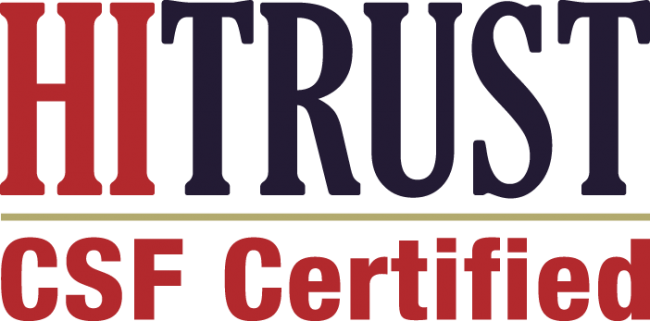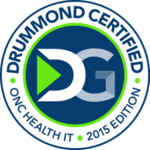The stark reality of healthcare in rural America paints a picture of persistent challenges that have plagued communities for decades. With over 60 million Americans living in rural areas, the gap between urban and rural healthcare access continues to widen, creating a crisis that demands innovative solutions. Enter digital referral management—a technological breakthrough that’s beginning to transform how patients in underserved areas connect with the specialized care they desperately need.
The Rural Healthcare Crisis: More Than Just Distance
Rural healthcare challenges extend far beyond geographic isolation. While the average person in an urban area lives within 10 minutes of a hospital, rural residents often face drives of 30 minutes or more to reach basic medical services. But distance is just the tip of the iceberg.
Critical Access Shortages
Rural hospitals have been closing at an alarming rate, with over 180 facilities shuttering since 2005. This trend has accelerated in recent years, leaving entire counties without a single hospital. The remaining facilities often struggle with limited resources, aging infrastructure, and difficulty recruiting qualified healthcare professionals.
Specialist shortages compound these problems significantly. While urban areas might have multiple cardiologists, neurologists, and oncologists within a few miles, rural communities may not have a single specialist within a 100-mile radius. This forces patients to choose between traveling long distances for care or going without treatment entirely.
Economic and Social Barriers
The challenges don’t stop at availability. Rural populations typically have higher rates of poverty, lower insurance coverage, and greater prevalence of chronic conditions like diabetes, heart disease, and mental health issues. Many rural residents work in industries without comprehensive health benefits, making healthcare costs a significant burden.
Transportation barriers further complicate access. Public transportation is virtually nonexistent in most rural areas, and many residents, particularly elderly patients, may not be able to drive long distances for medical appointments. Taking time off work for medical visits can also mean lost wages that many families cannot afford.
The Traditional Referral System: Built for a Different Era
The conventional healthcare referral process was designed when most medical care was delivered face-to-face within established geographic boundaries. This system relies heavily on personal relationships between providers, paper-based communications, and physical proximity between referring physicians and specialists.
Inefficiencies That Hit Rural Areas Hardest
Traditional referral management typically involves multiple steps: initial consultation, referral generation, appointment scheduling, medical record transfer, and follow-up coordination. Each step presents opportunities for delays, miscommunication, and system failures that disproportionately impact rural patients.
Paper-based referrals can take days or weeks to process, during which time a patient’s condition may worsen. Phone calls between providers often result in lengthy hold times and scheduling conflicts. Medical records may be incomplete or arrive too late to be useful for the specialist consultation.
These inefficiencies create a cascade of problems for rural patients. Delayed referrals can lead to disease progression, emergency situations, and ultimately higher healthcare costs. Patients may give up on seeking care altogether, leading to worse health outcomes and reduced quality of life.
Digital Referral Management: A Technological Bridge
Digital referral management systems represent a fundamental shift in how healthcare providers coordinate patient care across geographic boundaries. These platforms leverage cloud-based technology, electronic health record integration, and automated workflows to streamline the referral process from start to finish.
Core Components of Digital Systems
Modern digital referral platforms typically include several key features designed to address traditional system weaknesses. Electronic referral submission allows primary care providers to create and send referrals instantly, complete with relevant medical history, test results, and clinical notes.
Automated appointment scheduling eliminates the back-and-forth communication that often delays care. Patients can receive appointment confirmations, reminders, and preparation instructions through multiple channels, including text messages, emails, and phone calls.
Real-time status tracking gives both providers and patients visibility into where referrals stand in the process. This transparency reduces anxiety for patients and allows primary care providers to follow up proactively when needed.
Addressing Rural-Specific Challenges
Digital referral systems are particularly well-suited to address the unique challenges faced by rural healthcare providers and patients. The ability to transmit comprehensive medical information electronically means that specialists can review cases before patients travel long distances, ensuring that appointments are productive and necessary.
Priority-based routing helps ensure that urgent cases receive immediate attention, while routine referrals are processed efficiently without overwhelming specialist schedules. This triage capability is crucial in rural areas where specialist availability is limited.
Geographic optimization features can help match patients with the most appropriate and accessible specialists, taking into account factors like travel distance, wait times, and insurance coverage. This intelligent routing can significantly reduce the burden on patients while optimizing specialist utilization.
Telemedicine Integration: Expanding the Reach of Specialized Care
The integration of telemedicine capabilities with digital referral management has created unprecedented opportunities to deliver specialized care to rural areas. This combination allows for a continuum of care that bridges the gap between local primary care providers and distant specialists.
Virtual Consultations and Remote Monitoring
Telemedicine-enabled referral systems can facilitate initial specialist consultations without requiring patient travel. Video conferencing technology allows specialists to conduct comprehensive evaluations, review imaging studies, and develop treatment plans in real-time collaboration with local providers.
For many conditions, initial consultations can be conducted entirely virtually, with in-person visits reserved for procedures that require physical examination or intervention. This approach dramatically reduces the burden on patients while expanding access to specialized expertise.
Remote monitoring capabilities integrated with referral platforms enable ongoing specialist oversight of patient care. Chronic disease management, medication adjustments, and treatment monitoring can be conducted remotely, with escalation to in-person care only when necessary.
Collaborative Care Models
Digital referral systems with telemedicine integration support new models of collaborative care that are particularly beneficial for rural areas. eConsultation programs allow primary care providers to seek specialist input without formal referrals, getting expert guidance on diagnosis and treatment options.
Tele-mentoring programs connect rural providers with specialists for ongoing education and support. These relationships help build local capacity and confidence, reducing the need for referrals while improving the quality of care available in rural communities.
Multidisciplinary care teams can be assembled virtually, bringing together specialists from different locations to collaborate on complex cases. This approach ensures that rural patients have access to the same level of coordinated care available in urban medical centers.
Real-World Impact: Success Stories and Outcomes
Healthcare systems across the country are beginning to see significant improvements in rural care delivery through digital referral management implementations. Wait times for specialist appointments have been reduced from weeks to days in many cases, while patient satisfaction scores have improved due to better communication and coordination.
Quantifiable Improvements
Studies of digital referral implementations have documented impressive results. Average referral processing time has been reduced by 60-80% in many systems, while the percentage of completed referrals has increased significantly due to better patient engagement and communication.
Travel burden reduction is one of the most meaningful impacts for rural patients. Systems report that 30-40% of referrals can now be handled through telemedicine consultations, eliminating the need for long-distance travel while maintaining high-quality care.
Clinical outcomes have also improved in measurable ways. Earlier specialist intervention leads to better disease management, reduced emergency department visits, and lower hospitalization rates. These improvements translate into both better patient outcomes and reduced healthcare costs.
Patient Experience Transformation
The human impact of digital referral management extends beyond clinical metrics. Patients report feeling more informed and engaged in their care, with better understanding of their conditions and treatment options. The reduction in travel burden has particularly significant impacts on elderly patients and those with limited mobility.
Family caregivers also benefit from improved coordination and communication. Digital platforms often include family access features that allow caregivers to stay informed about appointments, treatment plans, and follow-up requirements without adding administrative burden to healthcare providers.
Implementation Challenges and Solutions
Despite the clear benefits, implementing digital referral management systems in rural areas presents unique challenges that must be addressed thoughtfully. Infrastructure limitations, including unreliable internet connectivity and outdated technology systems, can impede adoption and effectiveness.
Technical Infrastructure Requirements
Rural healthcare facilities often operate with limited IT resources and aging technology infrastructure. Successful digital referral implementation requires assessment and often upgrade of network capabilities, hardware systems, and cybersecurity measures.
Cloud-based solutions have proven particularly valuable for rural implementations because they reduce the need for local IT infrastructure while providing enterprise-level capabilities. However, reliable internet connectivity remains essential for effective system operation.
Mobile-first design approaches help address connectivity challenges by optimizing systems for smartphone and tablet access. Many rural residents have better access to cellular data than high-speed internet, making mobile optimization crucial for patient engagement.
Training and Change Management
Healthcare providers in rural areas often have limited time and resources for training on new systems. Successful implementations require comprehensive training programs that accommodate busy schedules and varying levels of technical expertise.
Peer-to-peer training models have proven particularly effective in rural settings, where providers often have strong collegial relationships and trust local recommendations. Identifying and training local champions helps drive adoption and provides ongoing support for system users.
Patient education is equally important, particularly for populations that may be less comfortable with digital technology. Multi-channel communication strategies that include traditional methods alongside digital options help ensure that all patients can benefit from improved referral processes.
Policy Implications and Support
The success of digital referral management in addressing rural healthcare challenges depends not only on technology but also on supportive policy frameworks and financial incentives. Healthcare policy at both federal and state levels plays a crucial role in enabling and encouraging adoption of these innovative solutions.
Regulatory Environment
Telemedicine regulations have evolved rapidly, particularly in response to the COVID-19 pandemic, but inconsistencies between states continue to create barriers for rural healthcare delivery. Streamlined licensing requirements and interstate compacts could significantly expand access to specialist care for rural patients.
Reimbursement policies for telemedicine and digital health services continue to evolve, with growing recognition of their value in addressing healthcare access challenges. Sustainable funding models are essential for long-term success of digital referral initiatives.
Privacy and security regulations must be carefully balanced with the need for efficient information sharing. Rural healthcare systems often have limited resources for compliance management, making it important that digital solutions include robust security features that meet regulatory requirements without creating administrative burden.
Conclusion: Building Bridges to Better Health
Digital referral management systems represent more than just technological upgrades—they are bridges that connect rural patients with the specialized care they need to live healthier lives. By combining efficient referral processes with telemedicine capabilities, these systems address both the logistical and geographic barriers that have long plagued rural healthcare delivery.
The transformation won’t happen overnight, and success requires commitment from healthcare providers, technology vendors, policymakers, and communities themselves. However, the early results are promising, with documented improvements in access, outcomes, and patient satisfaction across rural America.
As technology continues to evolve and mature, digital referral management will become an increasingly powerful tool for addressing healthcare disparities. The key to success lies in thoughtful implementation that considers the unique needs and challenges of rural communities while leveraging the full potential of digital innovation.
The future of rural healthcare access depends on our collective commitment to bridging the gap between where patients live and where expertise resides. Digital referral management, enhanced by telemedicine integration, provides a proven pathway forward—one virtual connection at a time.
For rural communities across America, this technological bridge represents hope: hope for timely access to specialized care, hope for better health outcomes, and hope for a future where geography no longer determines the quality of healthcare a person can receive. The challenge now is to ensure that this transformative technology reaches every community that needs it, leaving no patient behind in the digital divide.
HealthViewX: Pioneering Rural Healthcare Transformation
At the forefront of this digital healthcare revolution stands HealthViewX, a comprehensive care management platform that exemplifies how purpose-built technology can address the complex challenges facing rural healthcare systems. The HealthViewX Referral Management platform represents a mature, proven solution that has already demonstrated significant impact in bridging the care access gap for underserved populations.
Comprehensive Solution Architecture
HealthViewX has developed its referral management platform with rural healthcare challenges at the center of its design philosophy. The platform integrates seamlessly with existing electronic health record systems, eliminating the technical barriers that often prevent rural facilities from adopting new technologies. This EHR-agnostic approach ensures that healthcare providers can implement the solution regardless of their current technology infrastructure.
The platform’s cloud-based architecture addresses the infrastructure limitations common in rural areas. By hosting the system in secure, enterprise-grade cloud environments, HealthViewX eliminates the need for rural healthcare facilities to invest in expensive on-premise servers or specialized IT support. This approach makes advanced referral management capabilities accessible to even the smallest rural clinics and critical access hospitals.
Real-time analytics and reporting capabilities provide rural healthcare administrators with unprecedented visibility into referral patterns, wait times, and patient outcomes. This data-driven approach enables evidence-based decision making and helps rural systems optimize their limited resources for maximum patient impact.
Telemedicine Integration That Works
HealthViewX has recognized that successful rural healthcare transformation requires more than just efficient referral processing—it demands integrated telemedicine capabilities that expand access to specialized care. The platform’s built-in video consultation features allow rural primary care providers to collaborate directly with specialists during patient appointments, creating a virtual multidisciplinary care team.
The system’s intelligent routing algorithms consider not just specialist availability but also telemedicine capabilities, automatically identifying opportunities for virtual consultations that can eliminate patient travel while maintaining high-quality care delivery. This feature has proven particularly valuable for routine follow-ups, medication management, and chronic disease monitoring.
Patient engagement tools within the HealthViewX platform include multilingual support and accessibility features designed to serve diverse rural populations. The system accommodates varying levels of digital literacy through flexible communication options that include traditional phone calls alongside text messaging and email notifications.
Proven Rural Impact
Healthcare systems using HealthViewX have reported remarkable improvements in rural care delivery metrics. Partner organizations have documented average reductions in referral processing time from 7-10 days to less than 24 hours, with many urgent referrals processed within hours of submission. This acceleration has translated directly into improved clinical outcomes, particularly for time-sensitive conditions requiring specialist intervention.
The platform’s impact on patient travel burden has been equally impressive. Rural health systems report that 35-45% of specialty consultations can now be completed virtually through the HealthViewX telemedicine integration, saving patients thousands of miles of travel annually while reducing the financial burden associated with medical appointments.
Perhaps most significantly, HealthViewX has helped rural healthcare systems improve their specialist utilization rates. By providing specialists with comprehensive patient information before appointments and enabling virtual pre-screening, the platform ensures that in-person visits are highly productive and that specialist time is used most effectively.
Supporting Rural Healthcare Sustainability
Beyond immediate patient care improvements, HealthViewX is helping rural healthcare systems build long-term sustainability through improved operational efficiency and revenue optimization. The platform’s automated prior authorization management reduces administrative burden on rural staff while accelerating approval processes that often delay care delivery.
Comprehensive reporting and analytics help rural healthcare administrators identify trends, measure outcomes, and demonstrate value to payers and community stakeholders. This capability is crucial for rural systems that must continually justify their operations and secure funding for continued services.
The platform’s scalable architecture allows rural health systems to start with basic referral management and gradually add capabilities like care coordination, population health management, and value-based care reporting as their needs and resources evolve.
A Partnership Approach to Rural Transformation
HealthViewX recognizes that successful rural healthcare transformation requires more than just software implementation—it demands ongoing partnership and support. The company provides dedicated implementation specialists who understand rural healthcare challenges and work closely with providers to ensure successful adoption and optimization.
Training and support programs are specifically designed for rural healthcare environments, with flexible scheduling that accommodates the demanding schedules of rural providers and staff. The company’s commitment to rural healthcare extends to its pricing models, which are structured to be accessible for rural facilities operating with limited budgets.
As rural healthcare continues to evolve, HealthViewX remains committed to innovation that specifically addresses the unique needs of underserved populations. The company’s roadmap includes continued integration of artificial intelligence, expanded telemedicine capabilities, and enhanced interoperability features that will further strengthen the bridge between rural patients and specialized care.
The transformation of rural healthcare through digital innovation is not just a technological possibility—it’s a current reality being lived by patients and providers who have embraced platforms like HealthViewX. For rural communities ready to bridge the healthcare access gap, the tools and support needed for transformation are available today, promising a future where quality healthcare is truly accessible to all, regardless of geography.

